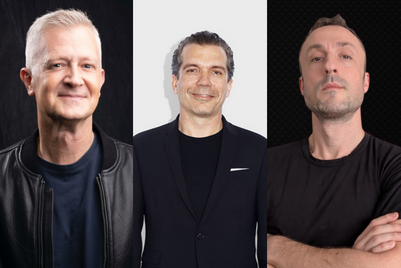
Twitter will begin testing sweeping changes to the way people reply and follow comments after admitting that "it’s too hard to find and follow conversations" on its platform.
After initial tests with focus groups, the microblogging company is launching a prototype that users will be able to evaluate and give feedback to Twitter, either privately or by tweeting with its representatives.
The prototype testing program is open to users who apply and, if successful, they will get to test the new conversations features.
The test version’s changes currently include:
- A new design for replies which aims to make it easier to see more of what people are saying;
- A rounded shape for replies to make the conversation "more approachable and chat-like";
- Creating indentation to organise and make it easier to follow conversations;
- Putting engagements, sharing options, and Tweet details behind a "tap", putting the replies in focus;
- New colouring to add context to replies, such as blue for people you follow and grey for responses from the original Tweeter.
- However, Twitter warned that permanent changes would take "many months" to implement and that not every thing it tests within the prototype would be released.
The announcement comes a week after a widely publicised debacle in which founder and chief executive Jack Dorsey was interviewed on Twitter live by ReCode's Kara Swisher.
Having suggested that Swisher interview Dorsey entirely over Twitter, the conversation became very difficult to follow as Dorsey's replies were getting lost and new sub-threads were inadvertently being created. Swisher said a friend had described in a text that the conversation thread had become a "chaotic hellpit".

Regarding the test app and the changes, a Twitter spokesman explained: "Our initial research on conversations showed that it’s difficult to consume and participate in conversations on Twitter and that people want to read conversations with people they recognise (like who they follow).
"We've tested early versions of these features in multiple rounds of user research – including indentation, reply colouring, and rounded bubble replies. Our early results from this research has shown how these features help people more easily read conversations, understand who's replying to who, and identify who's important to them in conversations so we’re excited to test them with more people in our prototype program."
'People are overwhelmed and don't know where to start'
The appeal of having conversations is very important to the Twitter brand, as shown in its latest Christmas ad that invited people to "Join the conversation". The online commercial featured an American lecturer named John Lewis who takes pleasure in replying to users who mistake him for the UK retailer.
The changes indicate Twitter is shifting towards being a platform of discovery, according to We Are Social's UK chief executive Jim Coleman, who insisted the platform must make it easier for people to discover content.
"Users bitched about the algorithm taking away Twitter's USP, but the reality is that without it (and even with it), it's often hard to find useful and interesting conversations. It's also always struggled historically with attracting new users; people are overwhelmed with the vast quantity of information and they don't know where to start.
"The changes will make it easier for people to see content from people they are interested in - much like Instagram, which prioritises comments from those you follow. Another example in the long list of social media platforms imitating one another, but one that could be well received on Twitter.
"Entrenched users will probably hate the design changes, as they always do with any alteration to what they're used to. Getting the wider Twitter community involved in testing could help mitigate this, which I imagine is partly their motivation for doing so."
Jim Cridlin, global head of Innovation and partnerships at Mindshare, said consumers are spending more time in chat-based apps and making Twitter more "chat-like" is likely to pique more interest from advertisers.
"We’re starting to see the shoots of a backlash against influencers with consumers starting to place more importance on those closest to them," Cridlin said. "Colour coding and other improvements that allow consumers to categorise who they follow would appeal to consumers looking to connect with those closest to them."
Advertisers are also keen to diversity their digital investment, Cridlin explained, which means making Twitter more user-friendly makes it more attractive as an investment recommendation.
"If more advertisers (i.e. clients) are using the platform because it’s easier to use, the ‘sell’ to invest in Twitter becomes easier," he said.
Twitter's daily active users grew 9% in 2018 to 126 million, according to its earnings report earlier this month in which it posted its first year of profit.


.jpg&h=334&w=500&q=100&v=20250320&c=1)
.jpg&h=334&w=500&q=100&v=20250320&c=1)
.jpg&h=334&w=500&q=100&v=20250320&c=1)


.png&h=334&w=500&q=100&v=20250320&c=1)
.png&h=334&w=500&q=100&v=20250320&c=1)




.png&h=268&w=401&q=100&v=20250320&c=1)

.jpg&h=268&w=401&q=100&v=20250320&c=1)



.png&h=268&w=401&q=100&v=20250320&c=1)